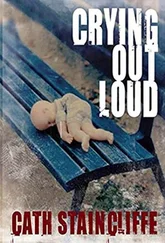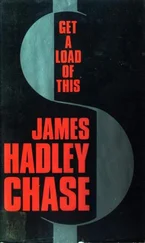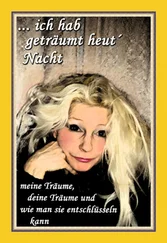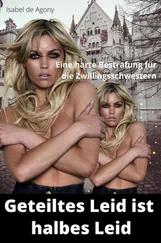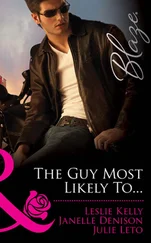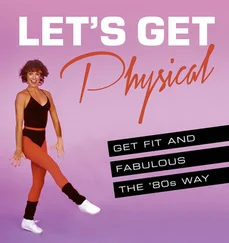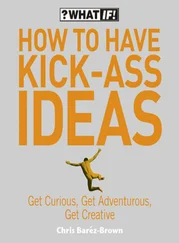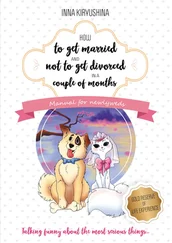He checks his watch. It’s half-past one. Perhaps he should go. What’s he got to lose? He’ll have himself hypnotised. After all, he has considered it on occasion. Juliana told him not to be silly; his problem is something he must overcome by himself. If the man is travelling the country, Karl thinks, he must have seen everything — he will certainly not be appalled by any inconvenient habits. (Inconvenient habits, that’s exactly how Juliana would label his affliction.) He can picture it: he puts up his hand, Doctor Bruno calls him to the front. How can we be of assistance, with what inconvenient habit? Doctor, I don’t do oil, I don’t do this, I don’t do that, I wash my hands, and I count. I count myself bonkers. If the numbers are wrong, I can’t do certain things, because certain numbers are of evil portent and worse. Step right up, young man, says the doctor, we’ll sort you out in a jiffy. He jumps onto the stage, he gazes into Doctor B’s psychedelic eyes, the audience bust a gut laughing, but he knows of nothing, he’s been put under, and when he emerges from his hypnotic trance, he’s healed. Everything’s hunky dory and Bob’s your uncle. He immediately has a bag of soggy chips from the Wimpy. And two doughnuts. The waitress serving him picks her nose, but what the hell, he’s cured, bring it on. As long as one affliction is not replaced by another. He develops a nervous tic in his right eye. Or he no longer does sugar, or water, or salt. The scope for deviance is unlimited. Doesn’t he just know it. Tell him about it, between him and Iggy they’ve got the T-shirts.
If only Hendrik had been here, it would have been a cinch. Or Juliana — she would also have kept Karl on course. She would have forced him to drive, even though the numbers were wrong. Initially she still put up with him, in the long run she became impatient with him. But he misses her. They had some good times together; some of the best times of his life, before the thing cropped up again. For a long time he was okay, he thought he had it under control, but something must have triggered it again. Stress of work, or a movie, or a dream, or some or other awkward situation that he’s forgotten all about. Then it suddenly hit again — full on. Exacerbated by stress about Iggy’s condition. If the numbers are wrong, the whole day can be fucked.
*
One Sunday Maria pays a visit to her friend Jakobus on the pig farm. He awaits her at the time agreed upon and shows her where to leave her car. From here they proceed on foot. Even though he’s explained the setup to her, it’s still different to the way she’s pictured it. The first animals they encounter are the pigs. Piglets scurry across the road and shelter under sheets of corrugated iron. Yes, it certainly stinks to high heaven here. As they wander along, the inhabitants appear one by one from their respective dwellings. Jakobus introduces them to Maria. Here are the two daughters of Josias from his marriage to Laetitia. The eldest with her little daughter — Josias’s granddaughter, deep-brown of skin. Here is Nomalizo Mhlaba, who used to live under a bridge in front of Checkers with her alcoholic mother, before her brother carried her to the farm on his back.
First Jakobus takes her to see the vegetable garden and nursery. The group grows, as more children join it. Here is this one, here is that one. Maria no longer really remembers what Jakobus told her about each of them. Also Laetitia, Josias’s ex (the one now cohabiting with the Argentinian who dyed his hair black, Maria recalls) comes to introduce herself. Laetitia is dark of skin; a formidable woman, a heavy drinker, Jakobus said. Then the group moves on to the rabbit hutches. Big enough so that you can stand up straight inside, and with a lovely view of Table Mountain. Maria holds a newborn rabbit in her hands. There’s a crush in the hutch, with all the children in there with her. In the meantime Lucinda Hlobo’s two eldest have also joined the group — pretty, bashful children, and from somewhere Jakobus has fetched her youngest: a boy with big velvet-brown eyes that all but dominate his whole face.
And lo and behold, as they start moving forward from the rabbit hutches, the shy Lucinda also puts in an appearance. She looks less formidable than what Jakobus described: younger, smaller, with a narrow head and face. To Maria she hardly looks like the woman who according to Jakobus shamelessly solicited him one evening — worldly-wise and brazen. Not a young woman Maria would notice in the street. The baby looks a lot like her. She’s wearing a shortish, tight-fitting skirt and sheepskin boots.
Maria tells her she’s heard that she used to live in Johannesburg. Lucinda says yes, as a young girl she was attacked there by a group of men and gang-raped. That’s where her ear was injured, and she turns her head to show a small, mutilated right ear — hardly more than half an ear. Maria doesn’t quite know how to react to this information — so out of the blue. (Taken aback. Whence the sudden openness and confidentiality of the woman?) Your children are pretty, she says. Thank you, says Lucinda, turns on her heel, and gone again. Fleet-footed as a buck on broken ground. The formidable Lucinda Hlobo.
The little group shrinks again, as the younger children return one by one to their respective dwellings. Maria and Jakobus carry on up higher on the circular road, past Uncle George’s kombi. He is sitting in the door, basking in the sunshine, this is his home. Maria doesn’t want to stare, but she’s curious to know how the kombi is appointed inside. Uncle George is German. The road up the hill curves to the right, and on the penultimate level they now reach the main attraction — the five chambers.
Jakobus unlocks an iron gate, they walk through a wide, dark passage (connecting all five chambers), filled with sculptures and other objects (junk?), to reach his living quarters. Maria has not expected anything like this, even though Jakobus has described it to her. The front two-thirds of the space is chock-a-block with a plethora of objects, her eye just picks up something here and there, because there are too many and the objects are too varied to be distinguished at first sight.
More or less in the back third is where Jakobus lives. His bed is to one side, on the ground, up against piles of yellowed magazines — a virtual wall of piled-up magazines. His bed on one side, his sculptures on the other, and a few garden chairs, logs serving as seats, crates as work surfaces. On one of these crates is an ancient computer. The large room — hall — is crepuscular, because apart from two little windows at eye level against the back wall (more like loopholes) and a feeble electric light, there is no other source of light. The back wall is taken up with a large mural by Josias Brandt, something that half-resembles the Last Judgement, quite psychedelic in approach.
Jakobus takes her to see the other chambers. Like the first, the second chamber is filled from top to bottom with objects. Difficult to take in everything at first sight. Building materials, theatre props, broken furniture, tools, charred books, a pile of 1972 Personality magazines, wooden planks, kitchen equipment, sculptures, carvings, rusty nails, containers, tin trunks, lampshades. A table with containers of rusty nails of different sizes, screws, door locks, padlocks, hinges. A milk crate with jawbones of animals. Baskets, cake tins, paint tins, slats, staves, stacks of planks, empty aerosol cans, empty bottles, rolled-up paper, green milk crates piled ceiling-high, shelves with plastic basins, books, broken toys, cardboard boxes, baboon skulls, whale vertebrae, vials of poster paint, bottles with unidentifiable objects floating in them, chemical jars, horns, ceramic statuettes, sharks’ teeth, a mounted frog skeleton, chains, mops, brooms. Empty wine containers. A collection of old suitcases (at least fourteen, on Maria’s swift count). A fair number of empty Klipdrift boxes. Garden furniture, garden tools. Baby baths with things in them. Rolled-up lengths of canvas. On the wall photos of Boer generals, a saccharine picture of the Virgin Mary, green underpants on a hanger, a reel of red string, a broken clock. Black-and-white depictions (drawings) of dead people, apparently (presumably murdered, mutilated), captioned: The Heavenly Choirs . Several paintings and other pictures. Everything the worse for wear, not a single object seems still functional.
Читать дальше

